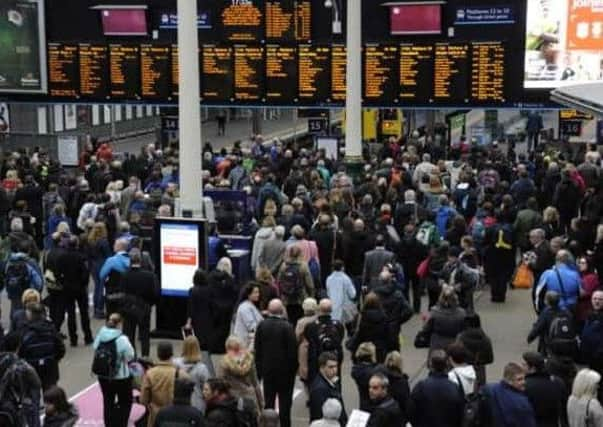Alastair Dalton: Will ScotRail's plan to cut delays actually work?


Encased as a scroll in two brass cylinders, with the section for that time of day spread out between them, “The Graph”, as it’s simply called, shows every train movement in and out of Glasgow Central.
Signallers say that such is its complexity, they have been unable to find a way of satisfactorily transferring the information to a computer screen, so continue to use what was fashioned in someone’s shed 40 years ago.
Advertisement
Hide AdAdvertisement
Hide AdThe device is one illustration of the challenge of keeping Scotland’s increasingly congested railways not only moving, but moving on time.
Network Rail’s signallers, who control the trains, form one half of the ScotRail Alliance’s integrated control centre in north Glasgow. However, there are significantly more ScotRail staff at the other end of the room, whose job includes working out what to do when things go wrong.
Despite their best efforts, ScotRail’s train punctuality trend has been on the slide since last August. It is true that nine in ten trains arrive at their destination on time - that is to say within five minutes of schedule - and ScotRail is in the top half of the table of British train operators.
However, the moving annual average, on which ScotRail is judged, has fallen in each of the last seven months, by a total of 1.7 percentage points.
That doesn’t sound catastrophic, but the lateness suffered by passengers varies hugely. While nine in ten trains arrive at the end of the Alloa branch line on time, barely one in four make it to the end of the Milngavie branch punctually.
However, these are far from little local difficulties because ScotRail’s Central Belt network is no simple pattern of separate lines, but a tangled web of tracks in which trains criss-cross each other at many points.
How to make this fiendishly intricate system work better was the task given to rail executive Nick Donovan, after a previous 249-point improvement plan which was put into action in autumn 2016 failed to sustain its initial improvements in performance.
There was a long pause when I asked ScotRail managing director Alex Hynes last week whether that plan was flawed or badly executed. He eventually said the plan was put in place before he joined last June - although it was still in operation then.
Advertisement
Hide AdAdvertisement
Hide AdMr Donovan’s 20 recommendations take up half the pages of the previous plan, but they attempt to tackle the problem by changing working practices rather a simple list of actions.
They seek to get to the root cause of delays, such as focusing on key areas of the network like Milngavie, whose late trains have a widespread and lasting knock-on effect.
Other recommendations, which are all to be implemented, include having staff in the right place at the right time, ensuring faults don’t happen just after engineering work has been completed, and improving train maintenance.
An expert observer told me he was impressed by the report, but it does beg the questions - why weren’t these measures tried before, and how likely are they to work any better than the previous plan’s, both initially and over time?
It also calls into question the way the previous plan was drawn up by ScotRail, at the behest of transport minister Humza Yousaf. We shall see.
